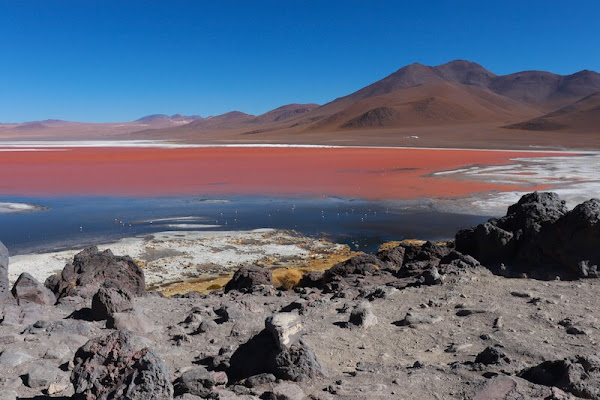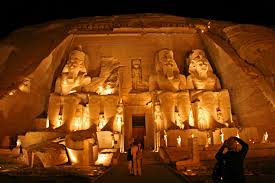BOLIVIA and CHILE
From Peru after the visit to Lake Titicaca we enter Bolivia and arrive by bus to the capital La Paz which is located at 3,600 meters above sea level in a valley with the city which then rises up the surrounding hills connected to the center by a cable car.
Let's go to visit the Los Brujos market where, among other things, they also sell dried llama fetuses as amulets.
We take a tour around the centre, we enter the beautiful cathedral, but there isn't much to see so we opt for two excursions, the first to the Valle della Luna made up of pinnacles formed by the erosion of the rocks due to the winds and rain and then we decide to climb the 5,420 meter high Mount Chakaltaya aboard a small minibus.
The climb is steep and full of hairpin bends, with unprotected ravines on the sides. I am sitting next to the driver and at a certain point in a curve the vehicle begins to skid towards the precipice. Instinctively I pull the handle, open the door and go out and everyone follows me.
Fortunately the driver manages to return and invites us to go back up but no one is willing, rather we make the last 500 meters uphill in the rarefied air to the top where we arrive at sunset with a superb view of the Andes and the Pacific in the distance.
There is a refuge and to cheer us up we order bottles of tequila and get hungover, including the driver and then in the dark we go down drunk and singing.
There was definitely an angel who protected us and made us arrive safe, sound and unconscious at the base of that dangerous mountain.
Then we visited Oruro, a city that had been very rich due to silver mines, we entered a small mine since we had an issue with the guide for the large one, there are even children who work there and chew coca leaves to avoid feeling tired .
Then we visited the main attraction of Bolivia: the salar de Uyuni, a vast salt lake of 10,000 square kilometers (our lake Garda is only 270 square kilometres, a dwarf in comparison) which can be traveled by truck with high wheels given that at the beginning the lake is washed by waters of about a meter, then less and less until the hard and blinding salt in the center, all around high volcanoes, spectacular.
Under the salt there is a brine rich in lithium and should constitute 50-70% of the world's lithium, an immense wealth given that lithium is an essential mineral for the production of electric batteries and also for cell phones, for military structures and aerospace.
After visiting Bolivia we enter neighboring Chile, a country 4,200 km long (like the distance between the North Pole and Sicily) and on average 200 km wide with different climate zones. It begins in the north with the desert, then the temperate zone, then the coniferous forests and finally the Tierra del Fuego with its glaciers and perpetual snow.
In fact, at the beginning we encountered the Atacama desert which is one of the driest in the world but in any case there is a small village called San Pedro de Atacama inside a tiny oasis in which we rested for a couple of hours before resuming our journey towards Antofagasta, the large port on the Pacific that we skipped to head instead towards the capital Santiago of Chile which is located between the very close Andes and where they also go skiing and the Pacific.
We took a short tour in the center and admired the square with the presidential palace de la Moneda where in 1973 the Chilean president Salvator Allende was killed by the rebels incited by the Americans because they wanted to regain possession of the rich copper mines that the president had nationalized.
Pinochet's dictatorship was established and he was also in office during our visit and in fact we were subjected to heavy control by the Chilean police who forced us to get off our bus with our suitcases open. They carried out a meticulous check of the contents, paying particular attention to books and diaries.
In the evening we went to have dinner in a large restaurant with a show by a comedian who, to our great surprise, took the courage to mock Pinochet by calling him Pinocho, that is, Pinocchio. When I returned to Italy I read that he had been arrested.
After Santiago we continued further south along the transoceanic road to its end in Puerto Montt, a city surrounded by coniferous forests and covered in snow.
We had to cross the Andes to get to Argentina in Bariloche, the Curtain of South America, a beautiful place with many lakes, forests and ski slopes and lots of chocolate to taste.
The group leader found a snowcat to which he attached a kind of armored van with a door in which we sat unconscious, singing as we climbed the interminable climb.
At a certain point the vehicle skidded and we started screaming until they opened the door for us: there was snow three meters deep all around before the border pass with Argentina. First we had a nice snowball fight and then we crossed the border under the incredulous gaze of the customs officers.
And we enter Argentina




























Comments
Post a Comment